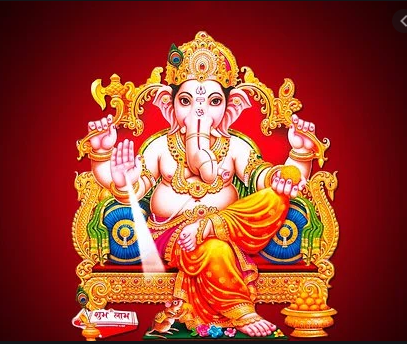Textbook versus reality: Controversy circles Hinduism

This is the Hindu God Ganesh. He is represents the god of wisdom.
February 19, 2021
There is a clear difference between knowing and understanding. Despite extensive knowledge on the topic of Hinduism, comprehending its true meaning can be difficult. As a result, this can lead to people undermining or joking about the religion.
Hinduism is considered either a monotheistic or polytheistic religion due to the representation of many deities. However, this topic in many Hindu households is controversial. Extravagant Hindu temples showcase over 20 gods. In contrast, textbooks explain your atman, or soul, goes to one entity that is Brahma.
The confusion lies between if Hindus pray multiple gods or a single entity. This religion is practiced in a variety of ways like henotheistically, monotheistically or polytheistically-it just depends on the believer.
“Some people believe in one specific god out of the millions of gods there are, and others may believe in them all,” sophomore Sanjhi Kesarwani said. “I believe Hinduism is a very complex and beautiful religion, from the vast amounts of gods to the beautiful celebrations.”
Another aspect often misunderstood in textbooks is the extent that Hindu people worship certain animals. For example, when non-Hindus see Hindus worshipping a cow, they often make fun of them for praying to an animal. Specifically, Kamanedhu, a goddess in the form of a cow, serves as an important symbol in Hinduism.
According to Harekrsna, the cow serves as a maternal figure, where Brahma, Vishnu and Shiva, three important deities, reside in. A basic principle of Hinduism is the importance of showing gratitude to mother nature and all living things because all life forms work cohesively to aid in the existence of mankind.
“While no one has ever made fun of me for practicing Hinduism, ridiculing the religion does occur,” sophomore Gowri Balagopal said. “It is important to focus on the meaning of certain aspects of Hinduism rather than mocking it blindly.”
While the textbooks portray Ganesh as an elephant god, they don’t explain the reason behind his elephant head and many students proceed to deride him without knowing his representation. However, there is a significant meaning behind his elephant head. His head represents the knowledge he holds, as he symbolizes wisdom. His large ears are to listen to the prayers of his followers.
He only has one tusk because as the legend goes, Ganesh breaks off his tusk to write the Hindu epic called the Mahabharata. Understanding the symbolism of his features plays an important role in appreciating Hindu culture.
“The way many students perceive gods is incorrect,” sophomore Sudeep Orvoy said. “The way [they are] depicted in foreign textbooks is often comedic to others.”
Another major topic emphasized in textbooks is the practice of the caste system. For example, discrimination through the caste system is still ongoing. According to the DW, laws were put in place so lower castes would not be discriminated against in society. While there are still regulations regarding the caste system, such as only Brahmins can be priests, the inequalities among castes have greatly decreased. Some even ask Hindu-Americans what caste they are in, despite the topic being relatively taboo and not spoken about.
“Personally I think that a lot of [non-Hindu] high school students take the caste system very seriously and it can be frustrating at times,” Kesarwani said. “[This can be offensive to Hindus] especially if one is not in a high caste in the caste system or if [a Hindu] doesn’t know much about it.”
At school, there is a diverse community with people that have various beliefs. Since Hinduism is such a vast religion, it is important to understand the true meanings behind core beliefs and not misinterpret them.
Schools emphasize ideals regarding Hinduism because there are plenty of people who are interested in gaining knowledge about the religion. While textbooks and teachers convey information that was believed in the past, it is crucial to include relevant and current information to decrease the chances of misunderstandings.
“I definitely feel like [the misrepresentation of Hinduism in education] should be addressed because it affects many students at the school,” Orvoy said. “[This will] allow them to have a more welcoming learning space.”




